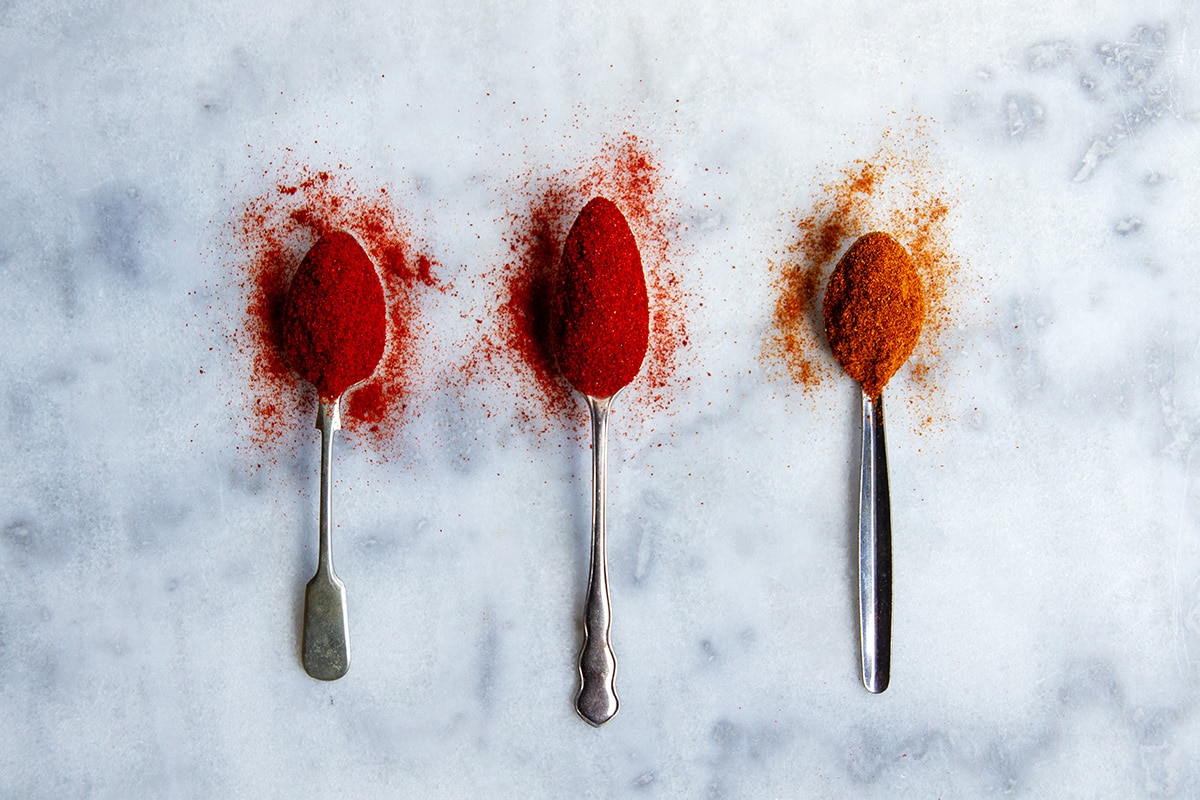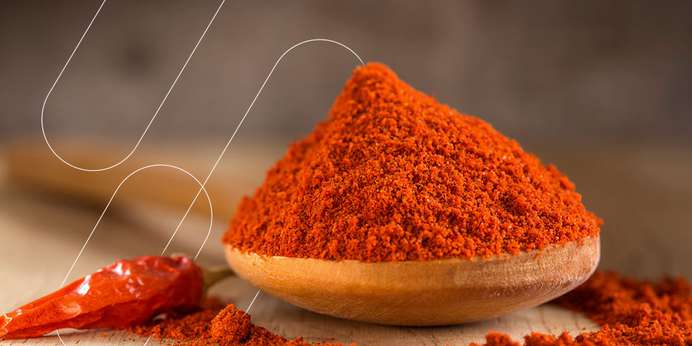Blog
How many types of paprika are there?

- Introduction
- Brief overview of paprika
- Importance of paprika in culinary use
- Origin and History of Paprika
- Tracing the roots of paprika
- Historical significance in various cultures
- Botanical Varieties of Capsicum
- Exploring the pepper family
- Differentiating between sweet and hot peppers
- Paprika Production Process
- Growing conditions and cultivation
- Harvesting and processing methods
- Classification of Paprika Types
- Sweet Paprika
- Hot Paprika
- Smoked Paprika (Pimentón)
- Hungarian Paprika
- Spanish Paprika
- Sweet Paprika Varieties
- Description and flavor profile
- Culinary uses and popular dishes
- Hot Paprika Varieties
- Heat levels and Scoville scale
- Dishes enhanced by hot paprika
- Smoked Paprika (Pimentón)
- Smoking process and its impact
- Regional variations and culinary applications
- Hungarian Paprika
- Notable characteristics
- Traditional Hungarian dishes featuring paprika
- Spanish Paprika
- Distinctive features and taste
- Iconic Spanish recipes using paprika
- Paprika in International Cuisine
- Global adoption and fusion in different cuisines
- Unique recipes from various cultures
- Health Benefits of Paprika
- Rich in vitamins and antioxidants
- Potential health advantages
- Tips for Buying and Storing Paprika
- Quality indicators
- Proper storage to preserve flavor
- Cooking Tips and Tricks
- Enhancing dishes with paprika
- Creative uses and flavor combinations
- Conclusion
- Recap of paprika varieties
- Encouraging experimentation in the kitchen
How Many Types of Paprika Are There?
Introduction: Paprika, a spice derived from various types of peppers, is a versatile and essential ingredient in many kitchens worldwide. Its distinct flavor and vibrant color add depth to a wide range of dishes. Let’s explore the fascinating world of paprika, delving into its origins, diverse varieties, and culinary applications.
Origin and History of Paprika: Paprika’s roots trace back to Central and South America, where peppers were first cultivated. The spice gained prominence in European cuisines after Christopher Columbus introduced peppers to the Old World. Over time, paprika became an integral part of various culinary traditions, contributing unique flavors and colors to dishes.
Botanical Varieties of Capsicum: To understand paprika, we must first explore the diverse family of peppers, known as Capsicum. This family includes both sweet and hot peppers, each with its distinctive characteristics. The choice of pepper significantly influences the flavor and heat intensity of the resulting paprika.
Paprika Production Process: The journey of paprika begins with the cultivation of peppers under specific conditions. Once harvested, the peppers undergo a meticulous processing method, including drying and grinding, to create the beloved spice. The production process plays a crucial role in determining the quality and flavor of the paprika.
Classification of Paprika Types: Paprika comes in various types, each offering a unique taste experience. The primary classifications include Sweet Paprika, Hot Paprika, Smoked Paprika (Pimentón), Hungarian Paprika, and Spanish Paprika. Understanding these distinctions allows chefs and home cooks to choose the right paprika for their culinary creations.
Sweet Paprika Varieties: Known for its mild flavor and vibrant color, sweet paprika adds a rich, earthy taste to dishes. Varieties include Spanish Piquillo and Californian Sweet, each with its own nuances and ideal culinary pairings. From stews to roasted vegetables, sweet paprika enhances a wide range of recipes.
Hot Paprika Varieties: For those seeking a spicy kick, hot paprika varieties, such as Hungarian Hot Wax and Spanish Piquante, bring heat to the table. The Scoville scale measures the spiciness of these paprikas, guiding cooks in choosing the right level of heat for their recipes.
Smoked Paprika (Pimentón): Originating in Spain, smoked paprika, or Pimentón, undergoes a unique smoking process, imparting a distinctive smoky flavor. This variety adds depth to dishes like paella and chorizo-based recipes. The different grades, ranging from sweet to hot, offer a spectrum of flavors for various culinary creations.
Hungarian Paprika: Known for its bright red color and rich taste, Hungarian paprika comes in several varieties, including Noble Sweet and Rose. Widely used in traditional Hungarian dishes like goulash, this paprika type contributes a robust flavor profile that distinguishes it from other varieties.
Spanish Paprika: Spanish paprika, or Pimentón de La Vera, is renowned for its deep, smoky taste. Classified into three types – sweet, bittersweet, and hot – Spanish paprika elevates dishes like patatas bravas and Spanish chorizo. The regional variations offer a wide range of flavors for diverse culinary applications.
Paprika in International Cuisine: Paprika’s influence extends beyond its country of origin, enriching international cuisines. From Indian curries to Mexican salsas, chefs worldwide incorporate paprika to add complexity and depth to their signature dishes. The spice’s ability to complement a variety of ingredients makes it a staple in global culinary exploration.
Health Benefits of Paprika: Beyond its culinary appeal, paprika boasts health benefits. Packed with vitamins and antioxidants, it contributes to overall well-being. The spice has been linked to improved digestion, immune system support, and potential anti-inflammatory properties.
Tips for Buying and Storing Paprika: Selecting quality paprika is crucial for achieving optimal flavor in your dishes. Look for bright colors and avoid clumpy textures. Proper storage, away from heat and light, preserves the spice’s freshness and potency.
Cooking Tips and Tricks: Experimentation is key when using paprika in the kitchen. From enhancing soups to creating flavorful rubs for meats, paprika’s versatility knows no bounds. Combining paprika with other spices opens up a world of possibilities, allowing you to tailor flavors to your preferences.
Conclusion: In conclusion, the world of paprika is diverse and captivating, offering a spectrum of flavors to elevate your culinary creations. Whether you opt for the mild sweetness of Spanish Piquillo or the bold heat of Hungarian Hot Wax, paprika brings depth and vibrancy to dishes from every corner of the globe. Embrace the versatility of paprika in your kitchen and embark on a flavorful journey that transcends borders.
FAQs About Paprika:
- Is paprika the same as chili powder?
- While both contain ground peppers, paprika is often milder and may have a different flavor profile than chili powder.
- Can I substitute sweet paprika for hot paprika in recipes?
- Yes, but be mindful of the difference in heat levels. Adjust the quantity based on your spice preference.
- How long does paprika stay fresh?
- Properly stored, paprika can maintain its freshness for up to one year.
- Are there any health risks associated with consuming paprika?
- Generally, paprika is safe to consume. However, individuals with capsicum allergies should exercise caution.
- Can I use smoked paprika in desserts?
- While unconventional, a small amount of smoked paprika can add an intriguing depth to certain chocolate-based desserts.
- What dishes pair well with sweet paprika?
- Sweet paprika complements dishes like roasted vegetables, stews, and chicken.
- Is there a difference between hot paprika and cayenne pepper?
- While both are spicy, hot paprika tends to have a more nuanced flavor compared to the straightforward heat of cayenne pepper.
- Can paprika help with weight loss?
- Paprika’s metabolism-boosting properties may contribute to weight loss when combined with a healthy diet and exercise.
- How can I intensify the smoky flavor of dishes using smoked paprika?
- Experiment with different smoking techniques and use smoked paprika as a finishing touch.
- Are there any cultural rituals involving paprika?
- In some cultures, paprika holds symbolic significance and is used in certain rituals or ceremonies.



